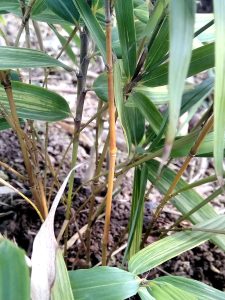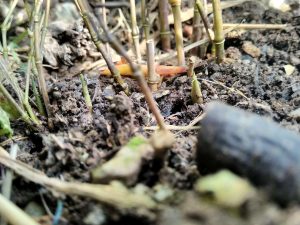Early shooting of Phyllostachys arcana seedlings
Cold winter is ending

Winter is not quite over, with morning low temperatures down at -5°C and I saw the first shoots on all of my Phyllostachys arcana ‘Luteosulcata’ seedlings. I planted them into a raised bed and covered with a transparent PVC cover so I could protect it from freezing temperatures during the winter. When the temperature dropped too much, I piled up snow on top to insulate the bed as much as possible. It now seems it worked perfectly. During the winter, the soil got frozen on several occasions, but it didn’t seem to bother the seedlings much. They were showing first signs of dehydration, yet none of them shows any signs of frost related damage. In fact, they look way better than they did when I was overwintering them inside. They struggled each and every winter, except their first year as tiny seedlings.
First shoots in mid March

None of the bamboos started shooting this year yet, not even the fastest shooter I have, Fargesia Rufa. I was pleasantly surprised to see the first shoots on arcana seedlings, even though they were protected. The shoots are small and there’s no way to tell what kind of upsize is to be expected, but they are here! It could be, that they started during the fall and had now decided to continue with their growth. I doubt it, because all the autumn shoots were whip shoots and these are regular spring shoots (still juvenile). I guess we’ll have to wait and see.

Hoping to see an upsize

So far, none of the Phyllostachys arcana ‘Luteosulcata’ seedlings had shown their parent’s striped culms. I have two vigorous unvariegated seedlings that are going to become at least pencil size thick this year. I’m sure if there is any culm variegation, they should start showing it by now. There are also 3 variegated seedlings that will be interesting to see developing. They are showing quite a lot of differences, even at their current juvenile phase. I’m very interested to see their culms color. It now seems that one of them is going to have yellow-ish culms with an orange tan. I have yet to see if the orange colour persists with age, or is it just a sunburn pigmentation that will eventually fade out.








